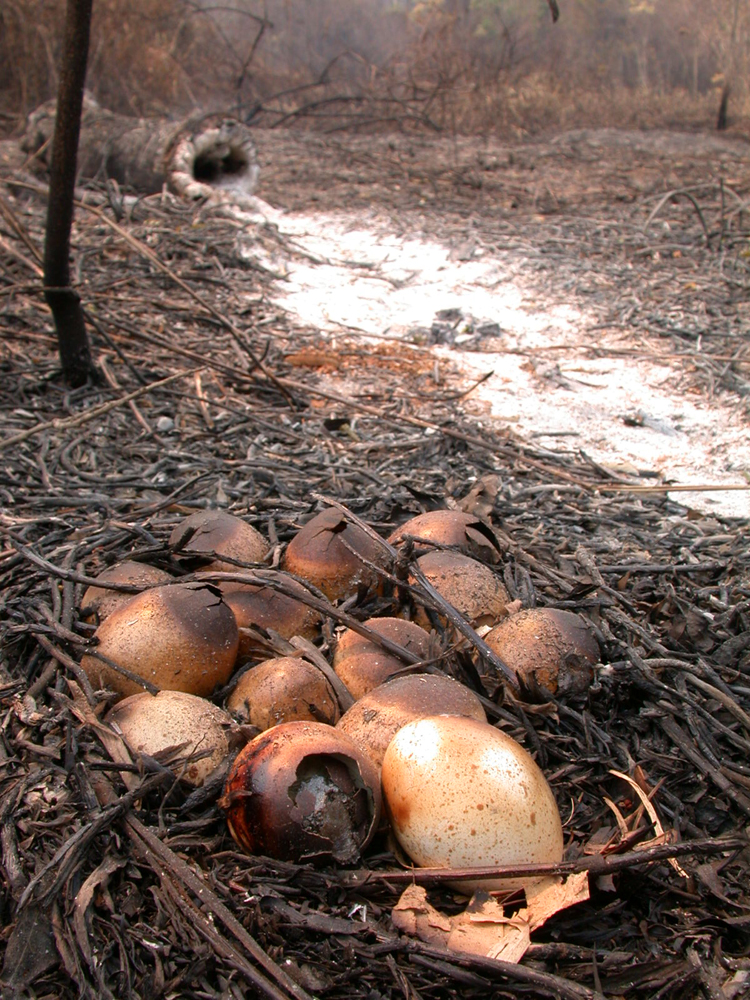
Wildlife Fight to Survive as Forests Burn (Gallery)

The Wildlife Conservation Society (WCS) contributed these images to Live Science's Expert Voices: Op-Ed & Insights.
While most birds can flee a charred forest, their nests can't — and neither can many of the smallest, most vulnerable animals. But conservationists around the globe are mobilizing to fight the rising fire risk. Read more about one such effort in "As Forests Burn, Conservationists Launch Global Wildlife Rescue" and below see a gallery of wildlife from one threatened region of central America.
Flying high

There are only about 300 wild scarlet macaws (Ara macao cyanoptera) left in Guatemala, all of which nest in an area of the Maya Biosphere reserve that is extremely vulnerable to forest fires. (Credit: Chris Packham/WCSGuatemala.)
Field afire

Wildfires burn rampantly in Guatemala's Laguna del Tigre national park in May, 2009. (Credit: Ben Schilling/WCS Guatemala with the support of LightHawk.)
Forced out
Sign up for the Live Science daily newsletter now
Get the world’s most fascinating discoveries delivered straight to your inbox.

During the 1998 El Nino, 40 percent of Guatemala's Laguna del Tigre National Park burned in a period of a few weeks. Jaguars, tapirs, and peccaries were forced to abandon their territories for islands of unburnt habitat. (Credit: Julie Larsen Maher ©WCS.)
Ocellated turkeys

Ocellated turkey (Meleagris ocellata) in Guatemala’s Mirador-Rio Azul National Park. (Credit: Roan McNab/WCS Guatemala.)
Fire damage

Ocellated turkey nest destroyed by forest fires, Laguna del Tigre national park, Maya Biosphere Reserve. (Credit: Jeremy Radachowsky ©WCS.)
Say cheese!

A jaguar (Panthera onca) captured by automatic cameras set up by the Wildlife Conservation Society to evaluate the health and size of the remaining jaguar population in Guatemala's Maya Biosphere reserve. (Credit: Rony Garcia/WCS Guatemala.)
A protected piece of land

Guatemala’s Maya Biosphere reserve is one of Central America’s largest and most spectacular protected areas. (Credit: Roan McNab/WCS Guatemala with the support of LightHawk.)
Surveying the damage

A Guatemalan farmer surveys former forest area after a burning within Laguna del Tigre National Park, Maya Biosphere reserve. (Credit: Ben Schilling ©WCS Guatemala.)
Baird's Tapir

The Baird's tapir (Tapirus bairdii), like this one in Guatemala's Laguna del Tigre national park, is Central America's largest land mammal, and depends intimately upon surface water for survival. (Credit: Roan McNab/WCS Guatemala.)
Extreme risks

Entire bodies of water in Guatemala's Maya Biosphere reserve dry out during extreme climatic events, putting wildlife and forest communities at risk. (Credit: Roan McNab/WCS Guatemala with the support of LightHawk.)
Soaring above it all

Macaws in flight. (Credit: Chris Packham/WCSGuatemala.)
Follow all of the Expert Voices issues and debates — and become part of the discussion — on Facebook, Twitter and Google+. The views expressed are those of the author and do not necessarily reflect the views of the publisher. This version of the article was originally published on Live Science.










